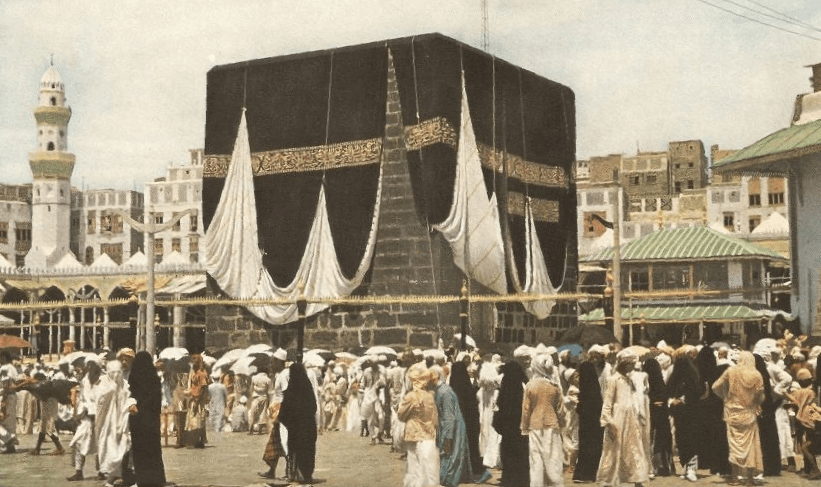Hajj, the sacred pilgrimage to Mecca in Saudi Arabia, is the fifth pillar of Islam and the most significant manifestation of Islamic faith and unity in the world. People from around the Muslim world have been performing Hajj for almost 1,400 years.
Over time, the number of pilgrims has increased significantly. At its peak in 2012, the highest recorded number of Hajj pilgrims was 3.16 million.
This significant increase in pilgrims has put a lot of pressure on existing infrastructure, necessitating numerous changes and improvements. Here, we explore key differences between Hajj in the past and Hajj in 2024.
Transportation
In the past, going to Hajj required a lot of effort and came with significant risks and dangers. Historically, pilgrims often traveled for months on foot, by camel, or in large caravans, enduring harsh conditions and facing threats from bandits, disease, and severe weather.
Today, the journey to Hajj has become much easier and faster. Most pilgrims arrive in Saudi Arabia by air, with King Abdulaziz International Airport in Jeddah and Prince Mohammad bin Abdulaziz Airport in Medina handling the bulk of international arrivals.
The introduction of the Haramain High-Speed Railway, connecting Mecca and Medina, has revolutionized travel between these holy cities. This high-speed train reduces travel time to just a few hours, offering a comfortable and efficient way for pilgrims to move between key sites.
Holy Sites Development
Up until the 1980s, Mina and the Jamarat area were undeveloped, leading to overcrowding and incidents during the Hajj. The facilities were basic, and the infrastructure could not handle the growing number of pilgrims.
Today, Mina is known as the largest tent city in the world, featuring over 100,000 fireproof, air-conditioned tents equipped with kitchens, bathrooms, and ablution stations.
The Jamarat Bridge has been significantly developed to prevent overcrowding, with a multi-level structure that can accommodate 120,000 pilgrims per hour. The Grand Mosque in Mecca has also expanded tremendously.
50 to 60 years ago, the mosque was much smaller, but now it can host millions of worshippers, reflecting extensive development and modernization efforts.
Social Media and Communication
Communication during Hajj was always limited. Pilgrims relied on word of mouth or handwritten notes to share information. Contacting family back home was difficult and often delayed. Photos and videos of the pilgrimage were rare and hard to come by.
Modern technology and widespread internet connectivity have transformed Hajj. Pilgrims use mobile phones and social media to stay connected and share their experiences instantly.
Live broadcasts allow Muslims worldwide to watch the Hajj in real-time. It’s common for pilgrims to take selfies in front of the Kaaba, something that was unimaginable in the past.
Health and Safety Measures
Health and safety were major concerns during pilgrimages due to the lack of medical facilities and the prevalence of diseases. Outbreaks of illnesses like cholera were common, and many pilgrims faced dehydration and heat exhaustion.
Today, health and safety are top priorities. Pilgrims must be vaccinated for diseases such as meningitis and COVID-19. Medical facilities are available at all major pilgrimage sites, staffed by thousands of healthcare professionals.
Surveillance technology, including drones and CCTVs, monitors crowd movements to prevent incidents and ensure safety.
Use of Future Technology
In the past, technological advancements were minimal, and the pilgrimage relied heavily on traditional methods. The infrastructure was basic, and there was little innovation in managing the pilgrimage.
Today, Saudi Arabia uses the latest technology to ease the Hajj process. Innovative ideas, such as fatwa apps, provide religious guidance, and robots are used to disinfect areas to ensure cleanliness.
One daring project involves generating electrical power from the movement of millions of pilgrims, showcasing a commitment to sustainability and innovation. By 2030, Saudi Arabia aims to welcome 30 million Muslims to perform Hajj, with plans to further upgrade facilities and create larger spaces for accommodation.
WE SAID THIS: Don’t Miss…Nusuk Wallet: Saudi Arabia’s Latest Digital Innovation For Hajj And Umrah Pilgrims



